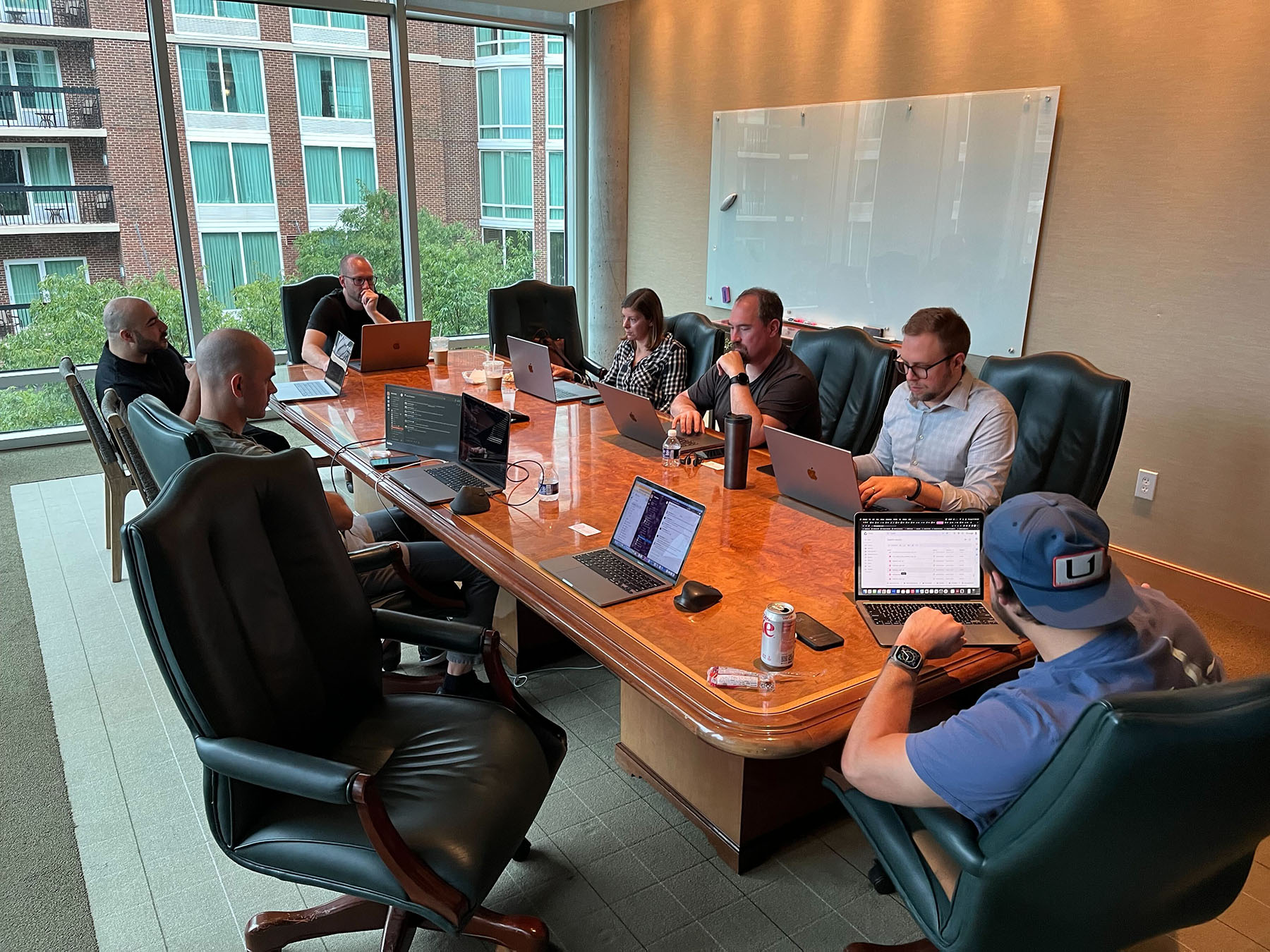Essential Steps in Crafting HIPAA-Compliant Software Solutions
In today’s rapidly evolving healthcare technology landscape, the development of software solutions that are both innovative and compliant with regulatory standards is not just an option; it’s a necessity. As healthcare providers increasingly rely on digital solutions to enhance patient care, streamline operations, and improve outcomes, the importance of safeguarding sensitive personal data has never been more critical.
The Health Insurance Portability and Accountability Act (HIPAA) protects sensitive personal data, including protected health information (PHI). It establishes a framework of standards that healthcare organizations must adhere to, ensuring that patient information is handled with the utmost care and security. Compliance with HIPAA is not merely a legal obligation; it is a testament to an organization’s commitment to maintaining patient trust and upholding the integrity of the healthcare system.
Crafting HIPAA-compliant software solutions involves a multifaceted approach that encompasses the technical aspects of software development and human elements, such as employee training and organizational culture. This article delves into the essential steps required to develop secure and forward-thinking software solutions. By understanding and implementing these steps, healthcare organizations can confidently navigate the complexities of HIPAA compliance, ultimately contributing to a safer and more efficient healthcare environment.
As we explore these steps, we will highlight the importance of a proactive approach to compliance, emphasizing the need for continuous risk assessment, robust data protection measures, and comprehensive training programs. By doing so, we aim to inspire healthcare providers to embrace the challenge of HIPAA compliance as an opportunity to enhance their operations and build lasting trust with their patients.
Understanding HIPAA Compliance
Before embarking on the journey of HIPAA-compliant software development, it is crucial to understand the core components of HIPAA. The act primarily focuses on two rules, the Privacy Rule and the Breach Notification Rule:
The Privacy Rule establishes national standards for the protection of individually identifiable health information, also referred to as protected health information.
- The Privacy Rule establishes national standards for protecting individually identifiable health information, also known as protected health information (PHI). This rule ensures that individuals’ health information is properly protected while allowing the flow of health information needed to provide high-quality healthcare and protect public health and well-being. It applies to health plans, healthcare clearinghouses, and healthcare providers that conduct certain healthcare transactions electronically.
- For more detailed information, you can refer to the U.S. Department of Health & Human Services (HHS) website, which offers comprehensive resources and guidance on the Privacy Rule.
The Security Rule: Also known as the HIPAA Security Rule, this rule sets standards for protecting electronic protected health information (ePHI) that is created, received, used, or maintained by a covered entity.
- The Security Rule, also known as the HIPAA Security Rule, establishes a set of national standards to protect electronic protected health information (ePHI) that is created, received, used, or maintained by a covered entity and emphasizes the importance of HIPAA-compliant software development. The rule requires appropriate administrative, physical, and technical safeguards to ensure the confidentiality, integrity, and security of ePHI. It is designed to be flexible and scalable, allowing covered entities to implement measures that are appropriate to their size, complexity, and capabilities.
- For further details, you can visit the U.S. Department of Health & Human Services (HHS) website, which provides extensive resources and guidance on the Security Rule.
These rules mandate the implementation of HIPAA-compliant software development along with administrative, physical, and technical safeguards, including transmission security, risk assessments, and user authentication, to ensure that healthcare providers can maintain the confidentiality, integrity, and availability of ePHI.
Steps to Develop HIPAA-Compliant Software
1. Conduct a Thorough Risk Assessment
The foundation of HIPAA compliance lies in thoroughly understanding the potential risks to electronic protected health information (ePHI). Conducting a comprehensive risk assessment is an essential step in HIPAA-compliant software development, serving as the bedrock for a robust security strategy. This process enables healthcare providers to identify vulnerabilities and threats to data security, ensuring that patient information is protected against unauthorized access and breaches. By systematically evaluating the current security landscape, organizations can pinpoint areas where ePHI may be at risk, allowing them to prioritize their efforts and allocate resources effectively to mitigate potential threats.
A risk assessment is not a one-time activity but an ongoing commitment that must adapt to new threats and technological advancements. As the healthcare landscape evolves, so do the tactics of cybercriminals, making it imperative for organizations to remain vigilant and responsive to emerging challenges. Employing industry-standard frameworks, such as the National Institute of Standards and Technology (NIST) guidelines, provides a structured approach to risk assessment. Additionally, leveraging advanced tools and technologies, such as automated scanning and monitoring solutions, can streamline the process and offer real-time insights into potential vulnerabilities. By continuously updating the risk assessment process, healthcare providers can refine their security measures, implement necessary updates, and stay ahead of potential threats, ultimately enhancing their overall security posture and ensuring compliance with HIPAA standards.
2. Implement Robust Access Controls
Access controls are a critical component of HIPAA-compliant software development, playing a pivotal role in safeguarding electronic protected health information (ePHI). Healthcare organizations can significantly reduce the risk of unauthorized access and potential data breaches by ensuring that only authorized personnel have access to sensitive data. Implementing robust access control measures is essential for maintaining the confidentiality and integrity of patient information. One effective approach is using role-based access controls (RBAC), which restricts data access based on the user’s role within the organization. This method ensures that individuals can only access the information necessary for their specific job functions, thereby minimizing the exposure of ePHI to unauthorized users.
Role-based access controls not only enhance security but also improve operational efficiency by streamlining the management of user permissions. By clearly defining roles and associated access levels, organizations can simplify the process of granting and revoking access as employees join, leave, or change roles within the organization. Additionally, RBAC facilitates compliance with the principle of least privilege, ensuring that users have the minimum level of access required to perform their duties. This approach protects sensitive data and helps organizations comply with HIPAA regulations by providing a clear audit trail of who accessed what information and when. By implementing and regularly reviewing access controls, healthcare providers can create a secure environment that supports both patient privacy and organizational efficiency.
3. Ensure Data Encryption
Encryption is a cornerstone of HIPAA compliance, serving as a formidable defense mechanism against unauthorized access to electronic protected health information (ePHI). In the digital age, where data breaches and cyber threats are increasingly sophisticated, encrypting data both at rest and in transit is essential. Data at rest refers to information stored on devices or servers, while data in transit pertains to information being transmitted across networks. By encrypting data in both states, healthcare organizations ensure that even if data is intercepted or accessed without authorization, it remains unreadable and secure. This dual-layered approach to encryption fortifies the protection of sensitive patient information, aligning with HIPAA’s stringent requirements for data security.
To effectively safeguard ePHI, it is crucial to utilize strong encryption protocols, such as Advanced Encryption Standard (AES) and Transport Layer Security (TLS). These protocols provide robust security measures that are widely recognized and trusted within the industry. However, encryption is not a set-it-and-forget-it solution. As cyber threats continue to evolve, so too must the encryption strategies employed by healthcare organizations. Regularly updating encryption protocols and conducting vulnerability assessments are vital practices to ensure that encryption measures remain effective against emerging threats. By staying ahead of potential vulnerabilities and adapting to new challenges, healthcare providers can maintain the integrity and confidentiality of patient data, thereby fulfilling their commitment to HIPAA compliance and patient trust.
4. Develop a Comprehensive Audit Trail
Developing a comprehensive audit trail is a fundamental aspect of HIPAA-compliant software development, providing a detailed record of all interactions with electronic protected health information (ePHI). An audit trail serves as a chronological log that captures who accessed the data, what changes were made, and when these actions occurred. This meticulous documentation is crucial for monitoring access and modifications to ePHI, ensuring that any unauthorized or suspicious activities can be quickly identified and addressed. By implementing robust logging mechanisms, healthcare organizations can maintain a transparent and accountable environment, which is essential for protecting patient privacy and upholding the integrity of sensitive information.
Beyond aiding in compliance with HIPAA regulations, a comprehensive audit trail offers significant operational benefits. It enhances accountability by providing a clear record of user activities, which can be invaluable in the event of a security incident or data breach investigation. Moreover, audit trails facilitate internal audits and assessments, enabling organizations to evaluate their security practices and identify areas for improvement. By regularly reviewing and analyzing audit logs, healthcare providers can proactively address potential vulnerabilities and ensure that their security measures remain effective. This proactive approach strengthens data protection and fosters a culture of transparency and trust within the organization, ultimately contributing to a more secure and efficient healthcare environment.
5. Train Your Team
A well-informed team is your first line of defense against data breaches and is integral to maintaining HIPAA compliance. In healthcare technology’s complex and ever-evolving landscape, the human element plays a crucial role in safeguarding electronic protected health information (ePHI). Regular training sessions for healthcare providers on HIPAA regulations and data security best practices are essential to ensure that all team members are equipped with the knowledge and skills necessary to protect sensitive data. These training programs should be comprehensive, covering many topics, from recognizing phishing attempts to understanding the nuances of data encryption and access controls. By fostering a continuous learning and awareness culture, organizations can empower their employees to act as vigilant guardians of patient information.
Ensuring that all team members, from developers to support staff, understand their role in protecting personal data and maintaining compliance is vital for creating a cohesive and effective security strategy. Regardless of their position, each team member contributes to the organization’s overall security posture. Developers, for instance, must be adept at integrating security features into software solutions, while support staff should be trained to handle sensitive information with care and discretion. By clearly defining roles and responsibilities, organizations can create a sense of ownership and accountability among employees. Regularly updating training materials to reflect the latest regulatory changes and emerging threats further reinforces the importance of compliance and security. This proactive approach reduces the risk of data breaches and builds a resilient organization that prioritizes patient trust and data integrity.
6. Establish a Business Associate Agreement (BAA)
In the realm of HIPAA-compliant software development, collaboration with third-party vendors or partners is often necessary to enhance functionality and deliver comprehensive healthcare solutions. However, when these external entities have access to electronic protected health information (ePHI), it becomes imperative to establish a Business Associate Agreement (BAA). A BAA is a legally binding document that outlines the responsibilities and obligations of each party in safeguarding patient data and ensuring compliance with HIPAA regulations. This agreement is a critical safeguard, ensuring that all parties involved are aligned in their commitment to protecting sensitive information. By clearly defining each entity’s roles, responsibilities, and expectations, a BAA helps mitigate the risk of data breaches and unauthorized access, thereby preserving the integrity and confidentiality of ePHI.
Beyond its role as a compliance tool, a well-crafted BAA fosters a culture of accountability and transparency among all parties involved. It delineates the specific security measures and protocols that must be implemented, such as encryption standards, access controls, and incident response procedures. Additionally, a BAA typically includes provisions for regular audits and assessments to ensure ongoing compliance and address any potential vulnerabilities. By establishing clear communication channels and expectations, healthcare organizations can build strong, trust-based relationships with their business associates. This collaborative approach enhances data security and supports the seamless integration of third-party solutions, ultimately contributing to a more efficient and effective healthcare delivery system. Regularly reviewing and updating BAAs to reflect changes in technology and regulatory requirements further strengthens this partnership, ensuring that all parties remain vigilant and proactive in protecting patient data.
7. Regularly Update and Test Your Software
In the ever-evolving healthcare technology landscape, staying ahead of emerging threats is crucial to maintaining HIPAA compliance. Regular updates and testing of your HIPAA-compliant software development solution are essential to ensure the ongoing security and integrity of electronic protected health information (ePHI). As cyber threats become increasingly sophisticated, healthcare organizations must adopt a proactive approach to software maintenance. Implementing a robust patch management process is a key component of this strategy. By systematically applying updates and patches, organizations can address known vulnerabilities and protect their systems from potential exploits. This continuous process fortifies the software against external threats and ensures that it remains aligned with the latest regulatory requirements and industry standards.
In addition to regular updates, conducting thorough testing is vital for identifying and addressing vulnerabilities before they can be exploited. Regular penetration testing, for instance, simulates real-world cyberattacks to evaluate the resilience of your software solution. This testing method provides valuable insights into potential weaknesses and helps organizations prioritize their security efforts. By identifying vulnerabilities early, healthcare providers can implement targeted measures to mitigate risks and enhance their security. Furthermore, incorporating automated testing tools and continuous integration practices into the development lifecycle can streamline the process, enabling organizations to detect and resolve issues more efficiently. By embracing a culture of continuous improvement and vigilance, healthcare organizations can confidently navigate the dynamic technology landscape, ensuring that their software solutions remain secure, compliant, and capable of protecting patient data.
The Path Forward
Crafting HIPAA-compliant software solutions, including HIPAA-compliant software development, is a journey that requires diligence, foresight, and a commitment to excellence. By adhering to these essential steps, you ensure compliance and position your software as a trusted solution in the healthcare industry. Embrace the challenge confidently, knowing that your efforts contribute to a safer, more secure healthcare environment for all.
In conclusion, HIPAA compliance is not just a regulatory requirement; it is an opportunity to demonstrate your dedication to protecting patient privacy and fostering trust in your software solutions. As you navigate the complexities of HIPAA-compliant software development, remember that each step you take brings you closer to creating a secure and innovative healthcare solution.
If you want a trusted partner with 30+ years of experience in customer software development, book a consultation with one of our experts.





